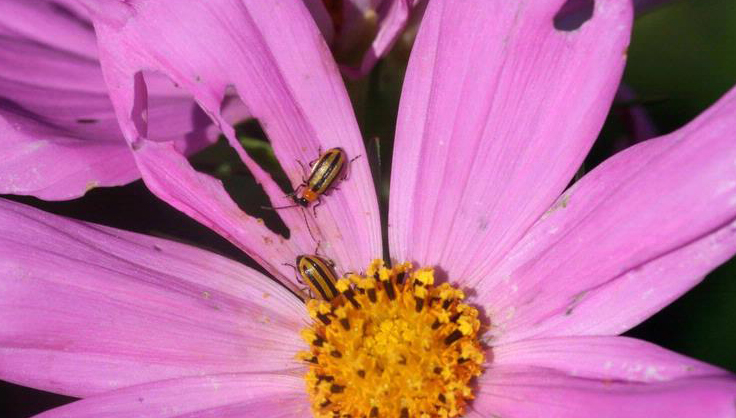How to Identify, Prevent & Control Cucumber Beetle
Tips and tricks for getting rid of a cucumber beetle infestation
 Photo: Whitney Cranshaw, Colorado State University, Bugwood.org
Photo: Whitney Cranshaw, Colorado State University, Bugwood.orgAn infestation of these spotted or striped greenish yellow beetles can spell doom for cucumbers and other squash-family plants. Feeding on tender leaves and flowers, they can stunt or even kill plants before they become established. And if that's not bad enough, the beetles also transmit serious diseases including bacterial wilt and squash mosaic virus that can ruin fruiting vines.
How to Identify Cucumber Beetles
The beetles are 1/8" to 1/4″ long and fly away quickly when disturbed. Adult cucumber beetles overwinter in plant debris and emerge in spring after the last frost. They lay orange eggs at the base plants. Larvae, which are white with brown heads, chew on roots.
In northern areas there is one generation per year. In the South and mild western regions, two or more generations are typical. They are not a garden problem in the far West.
How to Prevent, Control & Get Rid of Cucumber Beetles
- Seek out varieties of cucumbers and squash, such as County Fair cucumber, that have proven to be somewhat tolerant of cucumber beetles.
- Cover seedlings plants with garden fabric. Once young plants have become well-established, they can tolerate some cucumber beetle feeding.
- If plants are uncovered, handpick beetles from foliage and flowers and crush or dispose of them. Beetle hunting is easiest in the morning when the insects are still cold and sluggish.
- Mulch heavily around the vines with straw. This makes it difficult for beetles to move from plant to plant.
- Clean up debris in the fall to minimize the number of overwintering adults.
Last updated: 06/19/2023
Print this Article:
Get the Dirt
Stay up to date on new articles and advice. Please fill out the information below.
